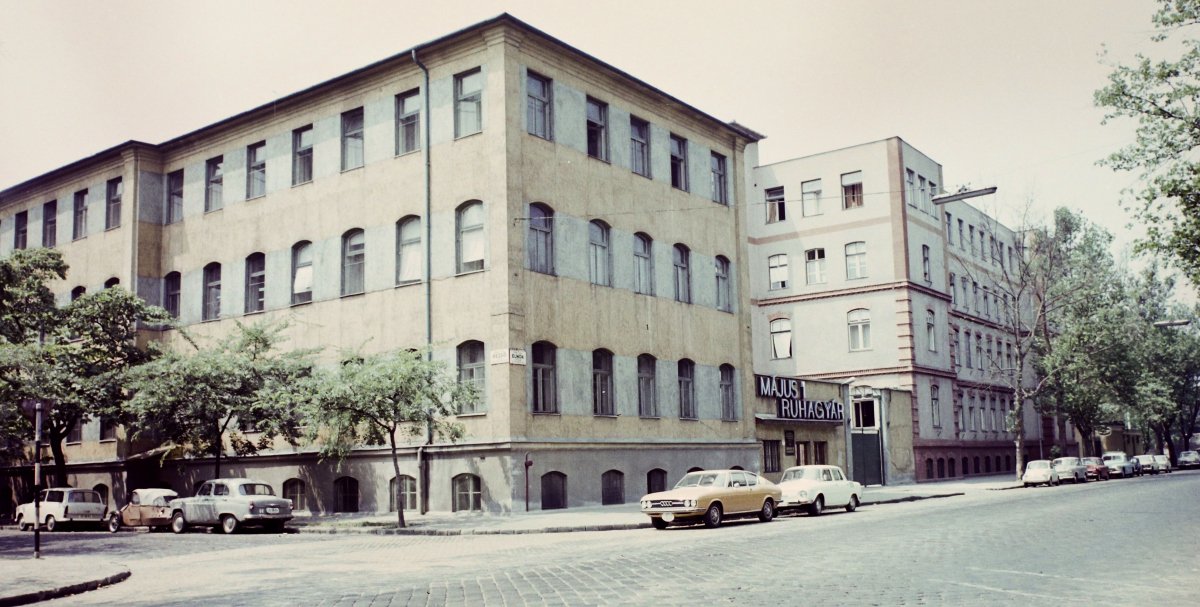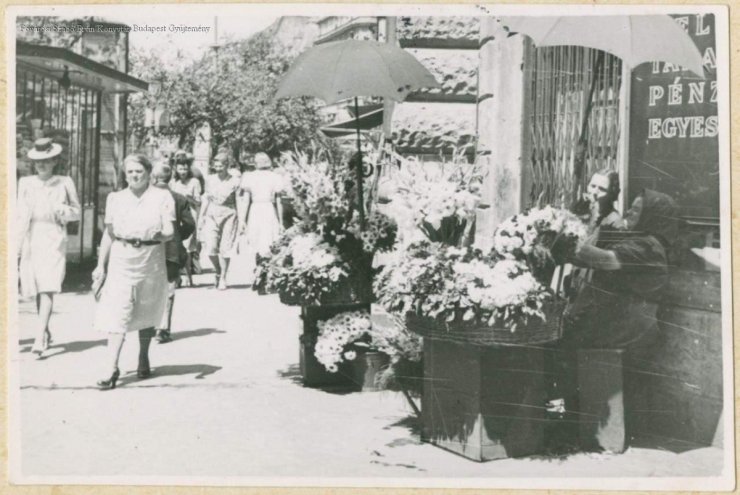In the 1870s, the area was known as the cattle market, and its construction began in 1877 when a military barracks hospital was first established on the side of Üllői Road. The largest part of the huge area remained undeveloped until 1895.
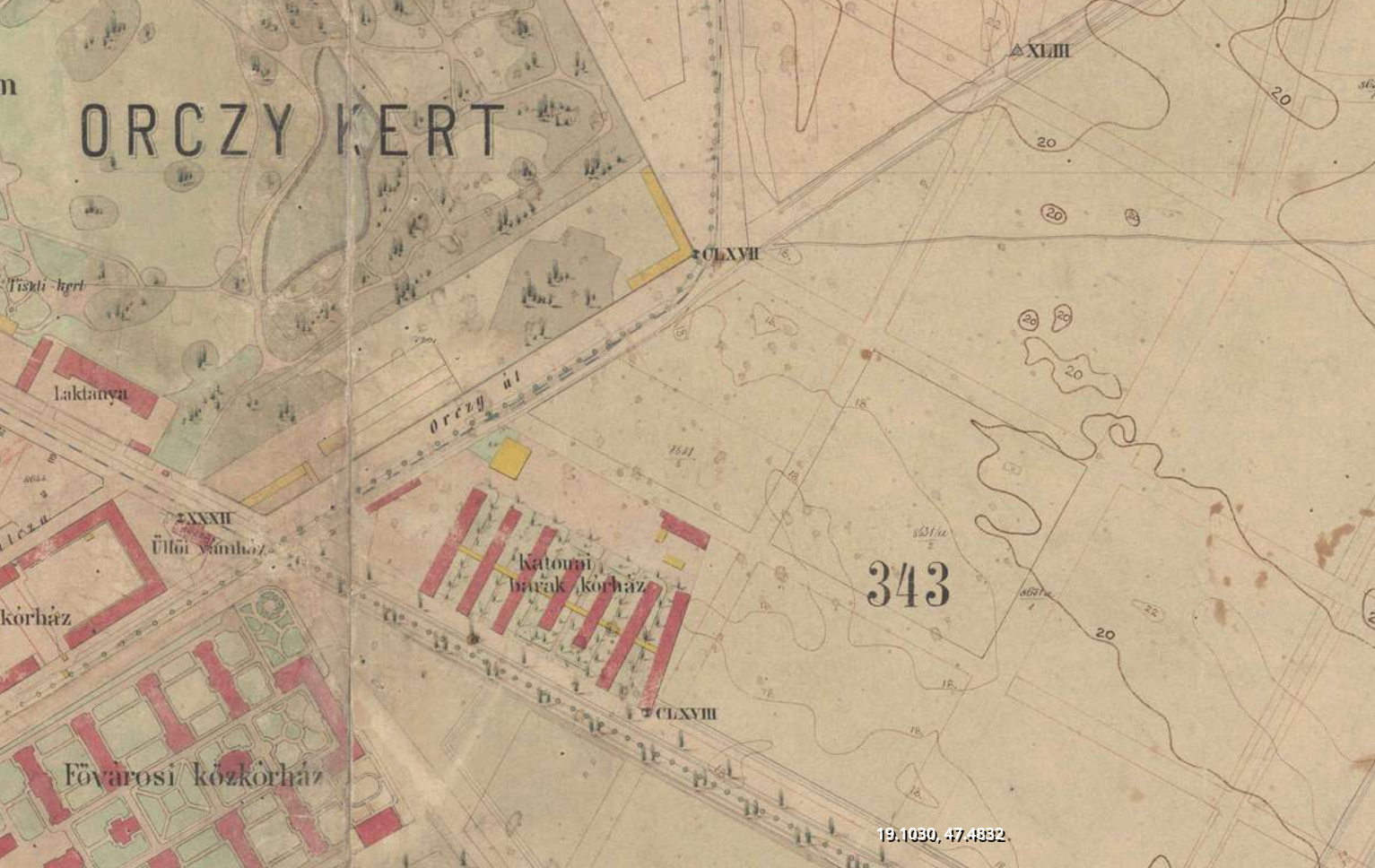
At the intersection of Orczy Road and Üllői Road, only the barracks hospital can be seen in 1878 (Source: Ferencváros Local History Collection)
At that time, the 16th Garrison Hospital stood on the site of the barracks, behind it was a fire-fighting training ground, and on the already mentioned Elnök Street side, there was a facility called the Royal Hungarian Army Clothing Warehouse. In 1900, the building, consisting of four separate parts, was known as the main clothing warehouse, and that year it was enriched with a separate command wing, which looked out onto today's Batsányi Street. The building complex was expanded based on the plans of the architect József Szentpály, who won the design and construction of many residential buildings in the capital and managed the foundation works of school buildings.
The expanded clothes warehouse was immediately given an important task because, during the preparation of the applied arts section of the millennium exhibition, ornate clothes from the castle of the Esterházy Family in Fraknó (Forchtenstein, Austria) and the castle of the Batthyány Family in Körmend were stored here until the opening. During World War I, the building was both a military clothing warehouse and a repository for donations collected for the civilian population. From 1917, a state company called Clothing Public Limited Company [Ruházati Részvénytársaság] collected and distributed second-hand clothes in Budapest. This was succeeded by the National Clothing Institute PLC [Országos Ruházati Intézet Rt.], which was officially founded in 1920 and engaged in the production, mass production and sale of women's and men's outerwear.
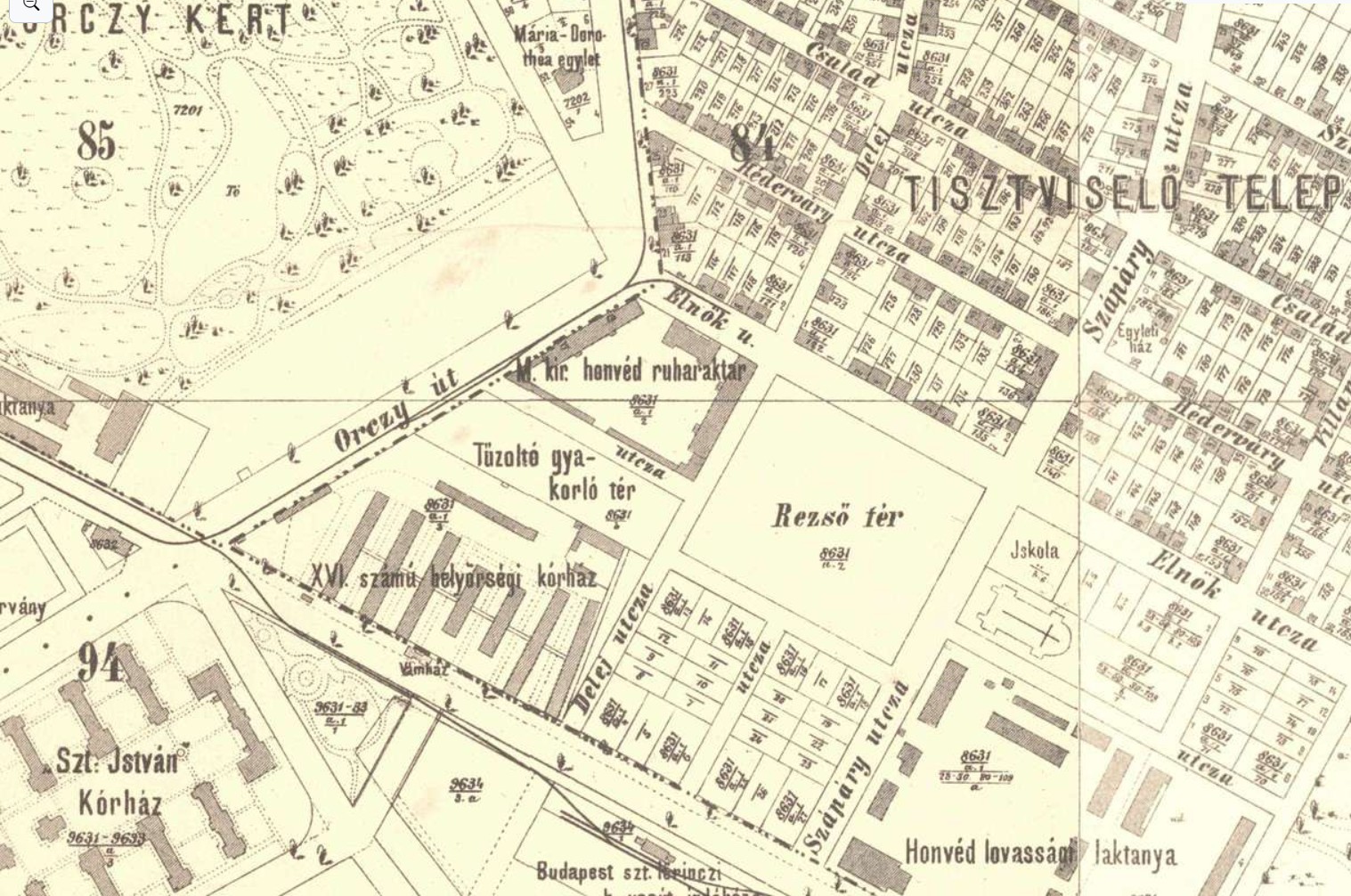
At the intersection of Orczy Road and Elnök Street, the military clothing warehouse is already there on an 1895 map (Source: Ferencváros Local History Collection)
The number of employees sometimes exceeded half a thousand, the male employees even formed a sports club, and their football team participated in the Hungarian championships until 1950 when the sports club was abolished. Between 1925 and 1934, a textile industry school offering three-year training also operated in the building. From January 1950, the clothing manufactory changed its name and continued to operate as the National Clothing Company [Országos Ruházati Nemzeti Vállalat]. Its profile was also changed, its task became the central procurement of the clothing and equipment needs of the employees of the specialised services under the supervision of the Ministry of National Defence, the Ministry of the Interior and the Ministry of Finance, as well as the MÁV, Posta, Bszkrt and judicial penal institutions. From March 1953, it advertised itself as 1 May Clothing Factory [Május 1. Ruhagyár] in the domestic press. After 1957, in addition to uniforms, clothes for the civilian population were again produced.
At the beginning of 1967, the factory's products were given an independent brand name (following the Western example). The Elegant products proved to be popular, and in July of that year, a separate Elegant sample store was opened on Erzsébet Boulevard. From then on, the company also used the name Elegant 1 May Clothing Factory [Elegant Május 1. Ruhagyár].
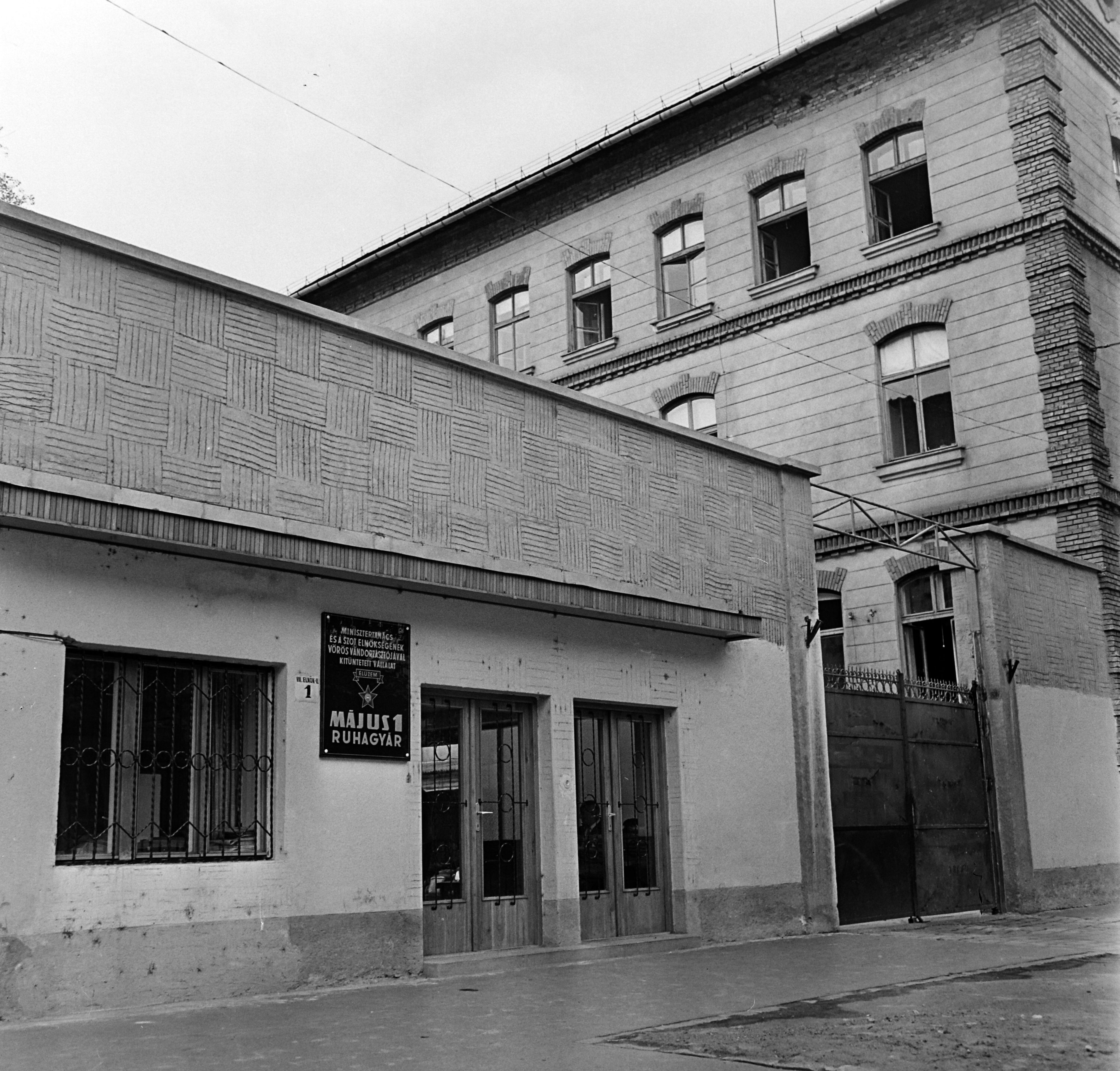
AThe entrance to the clothing factory from Elnök Street in 1966 (Photo: Fortepan/No.: 126717)
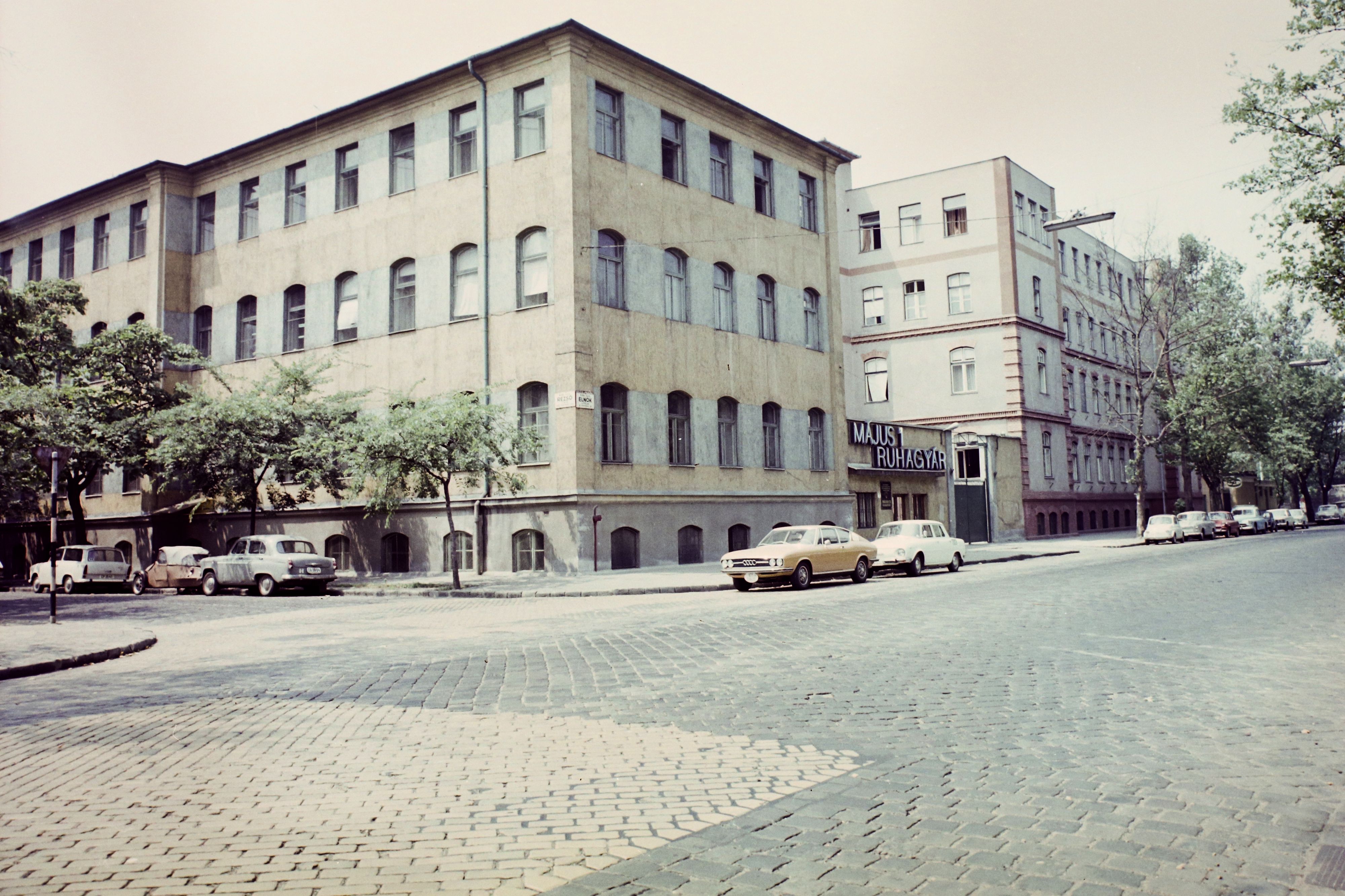
The Elnök Street entrance to the clothing factory around 1970 (Photo: Fortepan/No.: 111057)
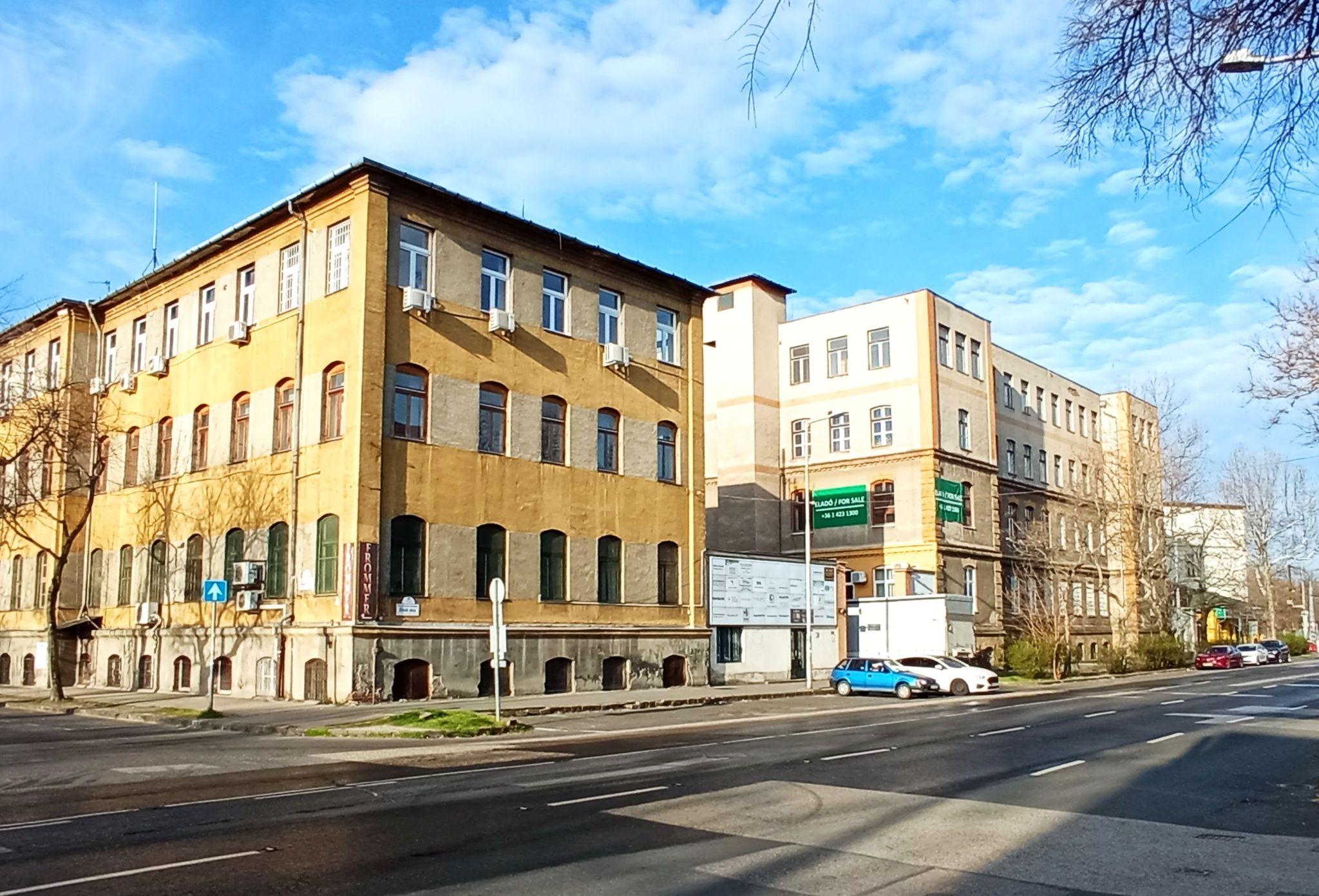
The Elnök Street entrance of the factory building nowadays (Photo: Ambrus Gönczi)
At that time, by the way, "1 May" had subsidiaries not only in Budapest, but also in Marcali, Kaposvár, Szolnok, Cegléd, Komló, Karád, Túrkeve, Dorog and Öreglak, and the products produced by around five thousand workers went to Canada, Japan, the United States and many Western European countries in addition to the socialist countries.
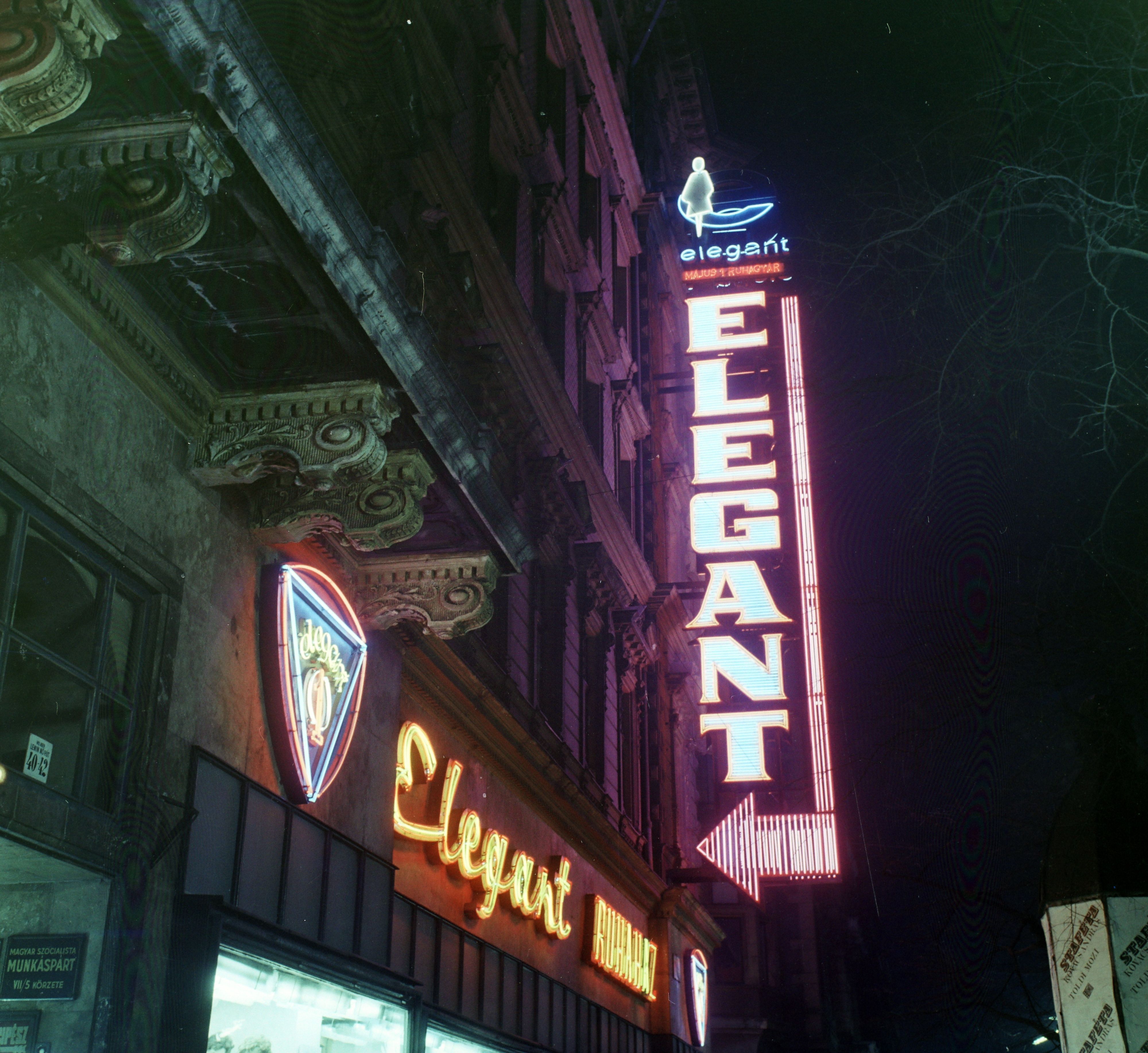
The Elegant clothing store at 40–42 Erzsébet Boulevard around 1980 (Photo: Fortepan/No.: 126583)
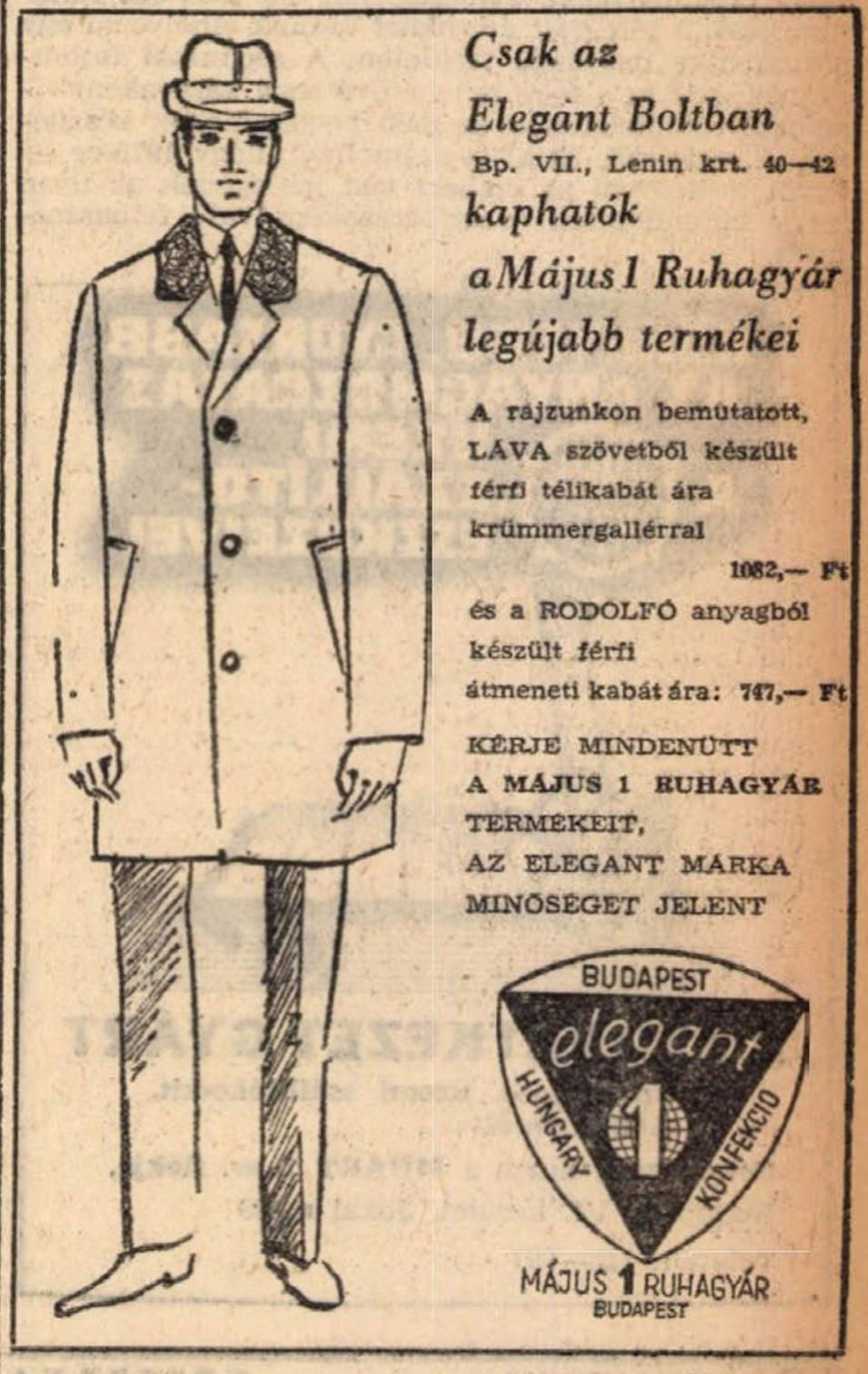
Elegant Store advertisement from 1967 (Source: Népszava, 6 October 1967)
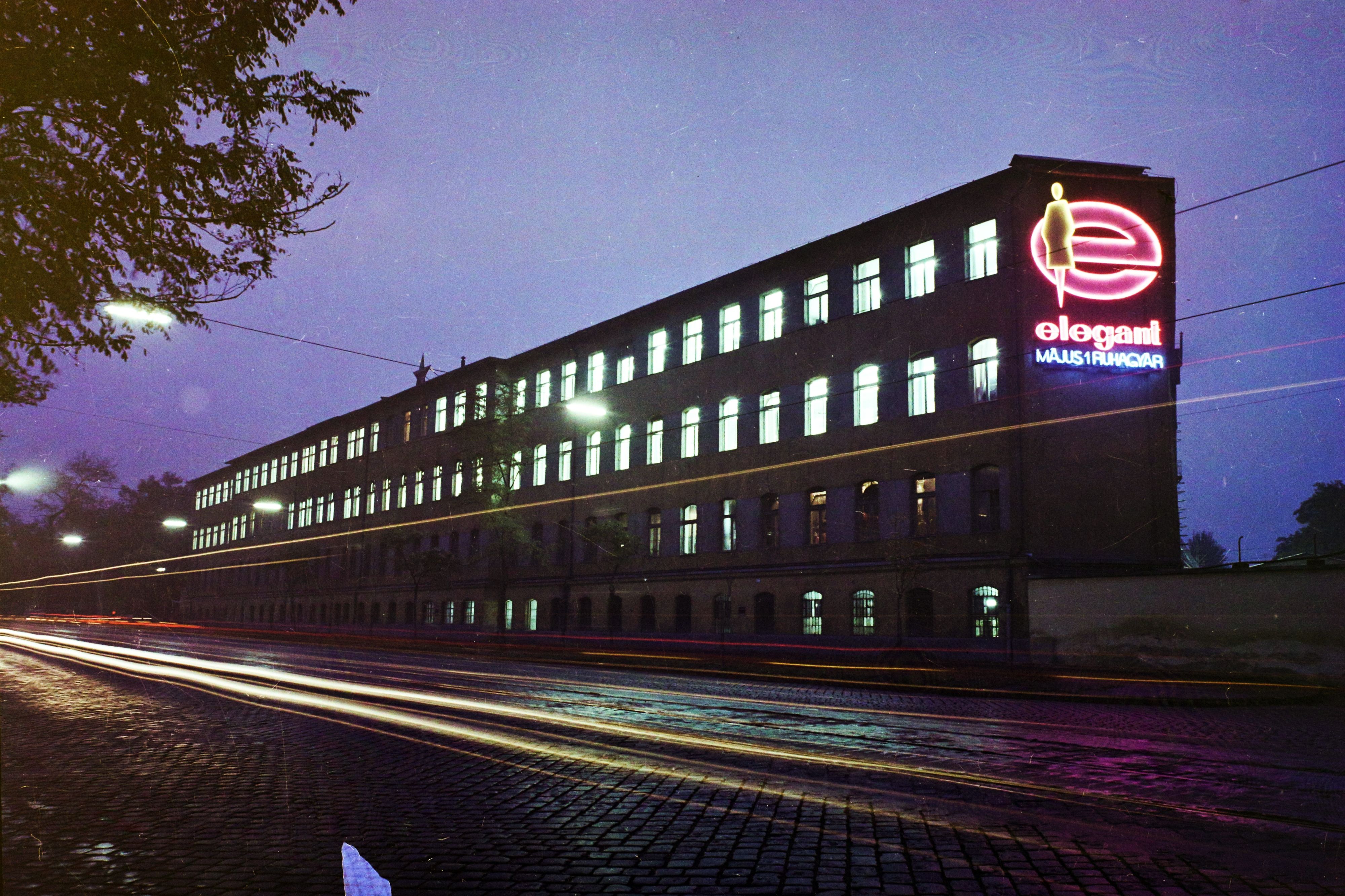
The facade of the clothing factory on Orczy Street from Nagyvárad Square in 1970 (Photo: Fortepan/No.: 110982)
In the 1970s, there were not many households in the country that did not have a storm or padded jacket, a man's faux leather trench coat, a faux fur coat, women's suit. In 1977, the factory signed a contract with the Levi Strauss jeans factory, as a result of which the factory in Marcali produced one million jeans a year, from which, of course, it also made its way into domestic stores as a popular item of clothing.
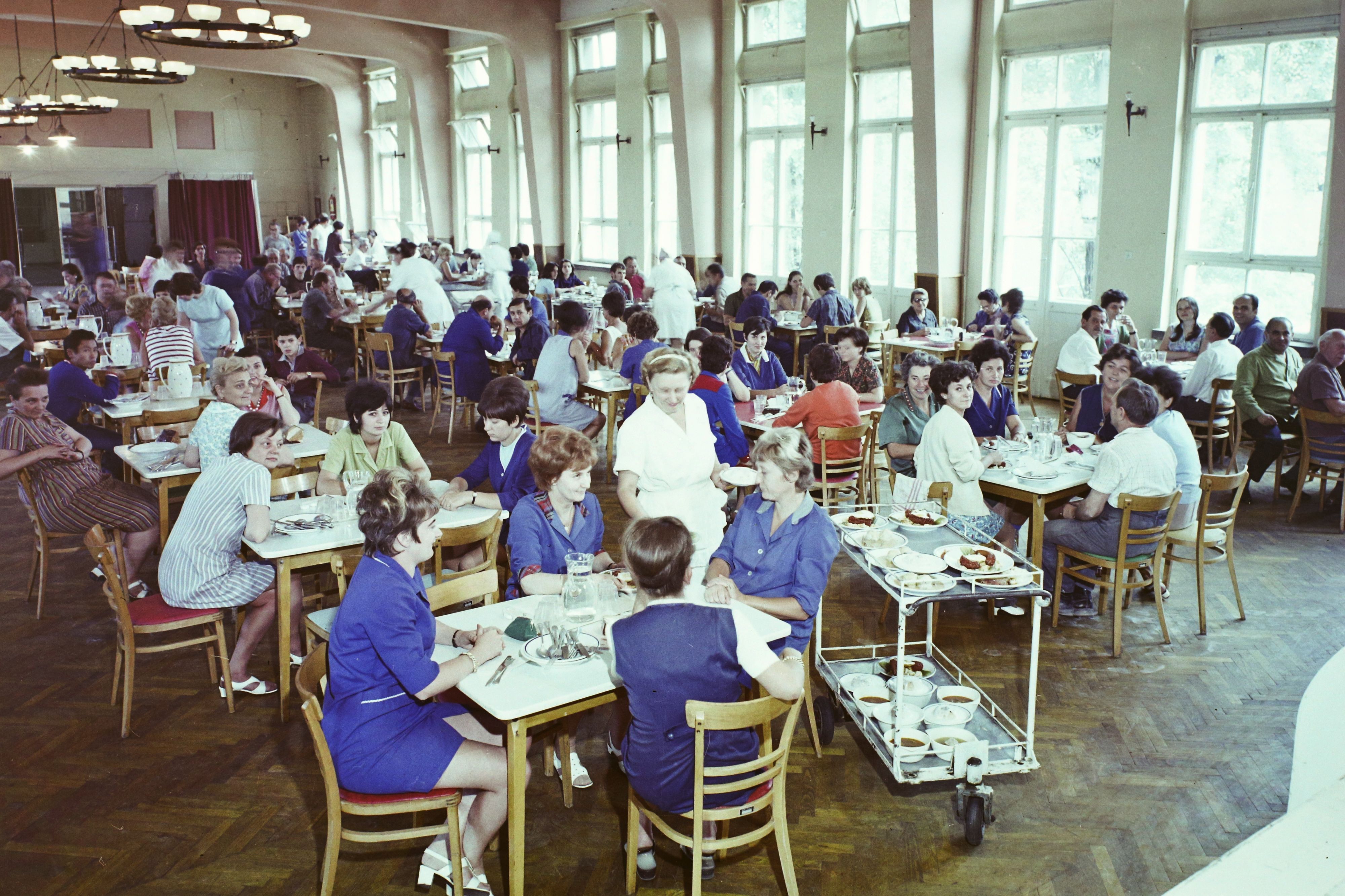
The canteen of the clothing factory around 1970 (Photo: Fortepan/No.: 111058)
Of course, the period after the change of regime also thoroughly transformed the clothing factory. By 1993, it was completely privatised, it continued to operate under a new company name, and in some parts of the building, in addition to tailoring, businesses of various profiles were started and continue to operate to this day. Some come for a good fitness workout, some for the pleasure of playing table tennis, some for telecommunication equipment, and some visit the building to repair their computer. There is not much that reminds us of the former military warehouse or the centre of the socialist textile industry. But in the yard with a huge floor area, there are still some inscriptions from the turn of the century or the 1960s.
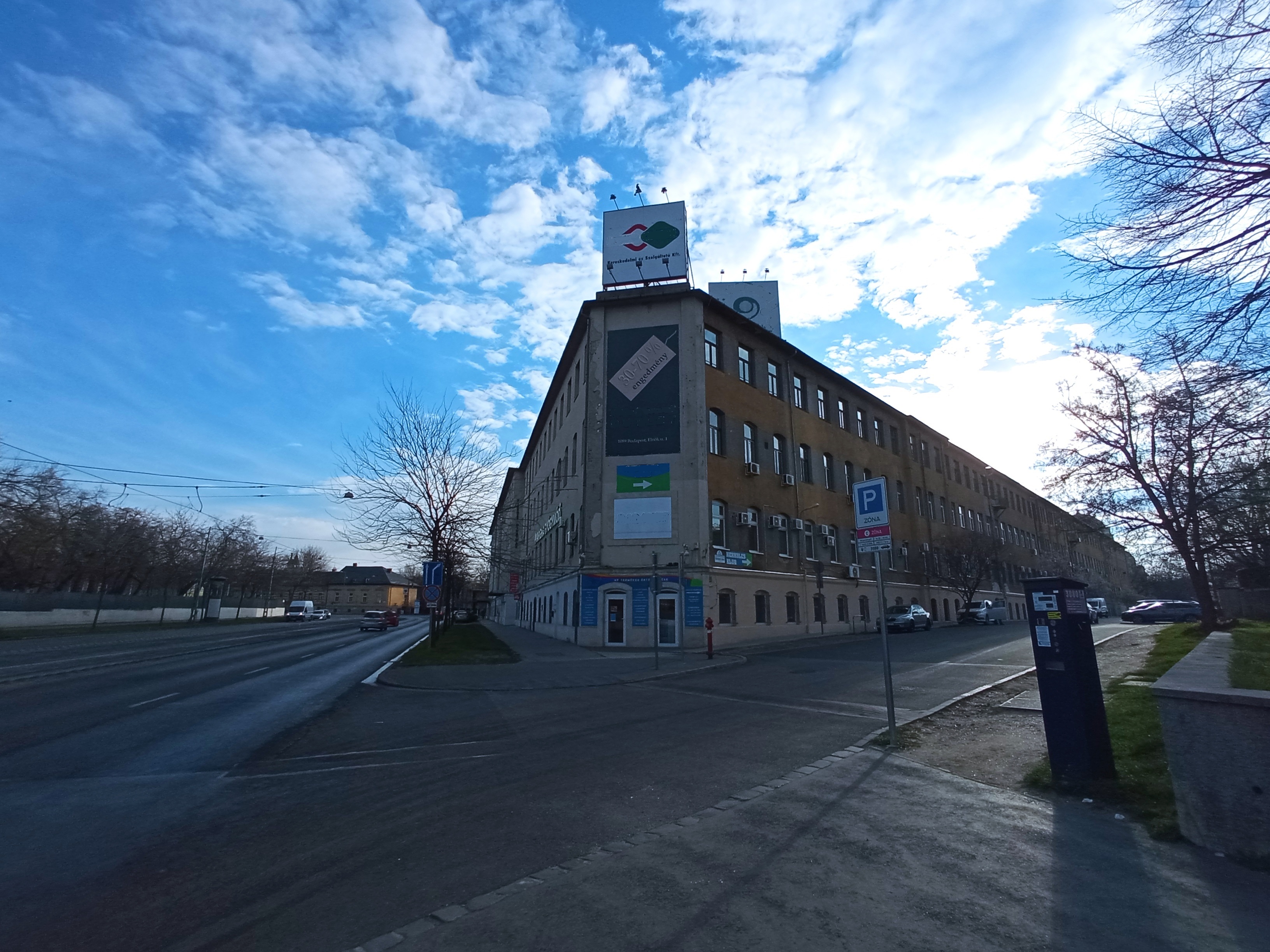
The building from Nagyvárad Square nowadays (Photo: Ambrus Gönczi)
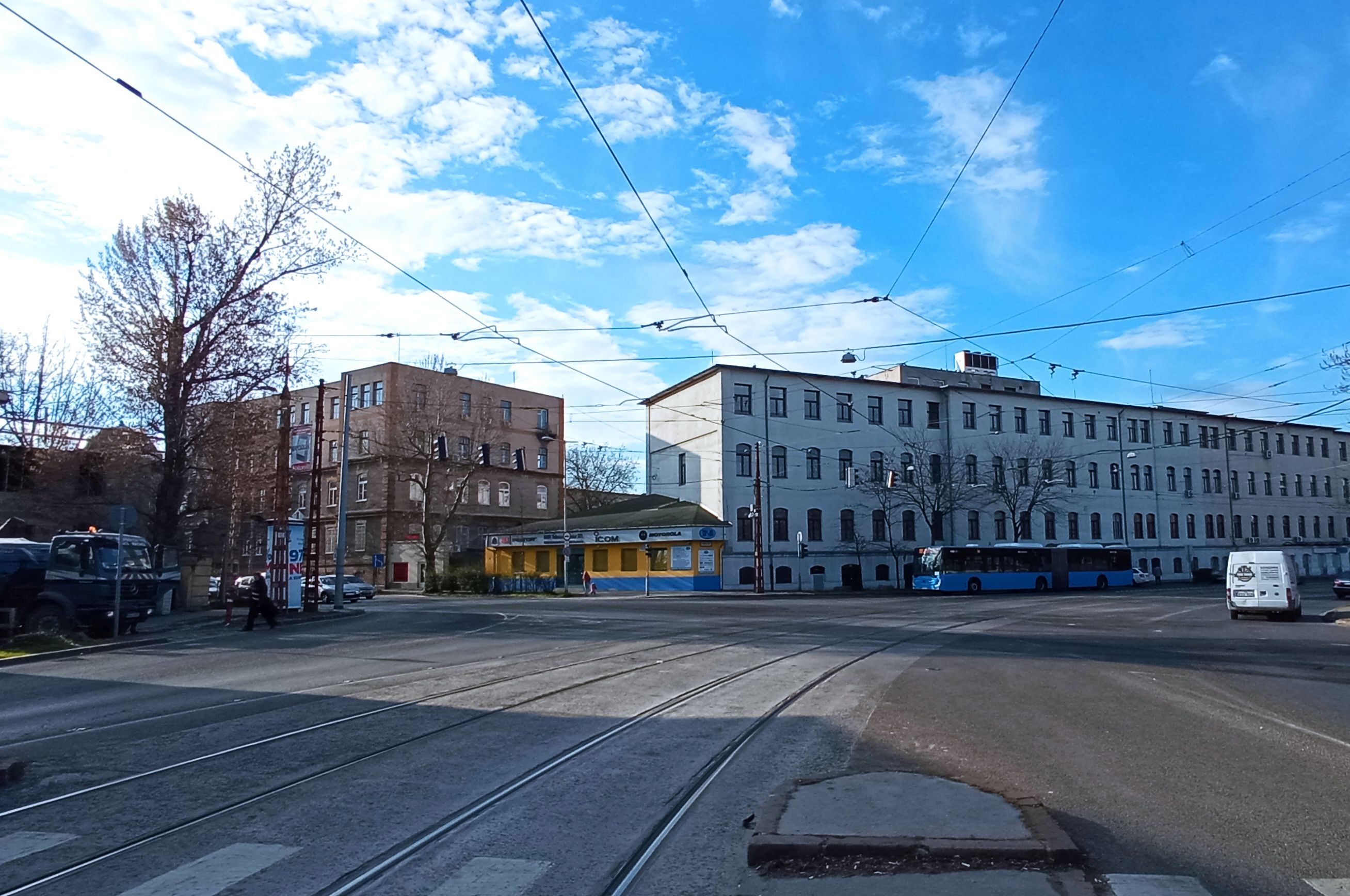
The building from Orczy Road nowadays (Photo: Ambrus Gönczi)
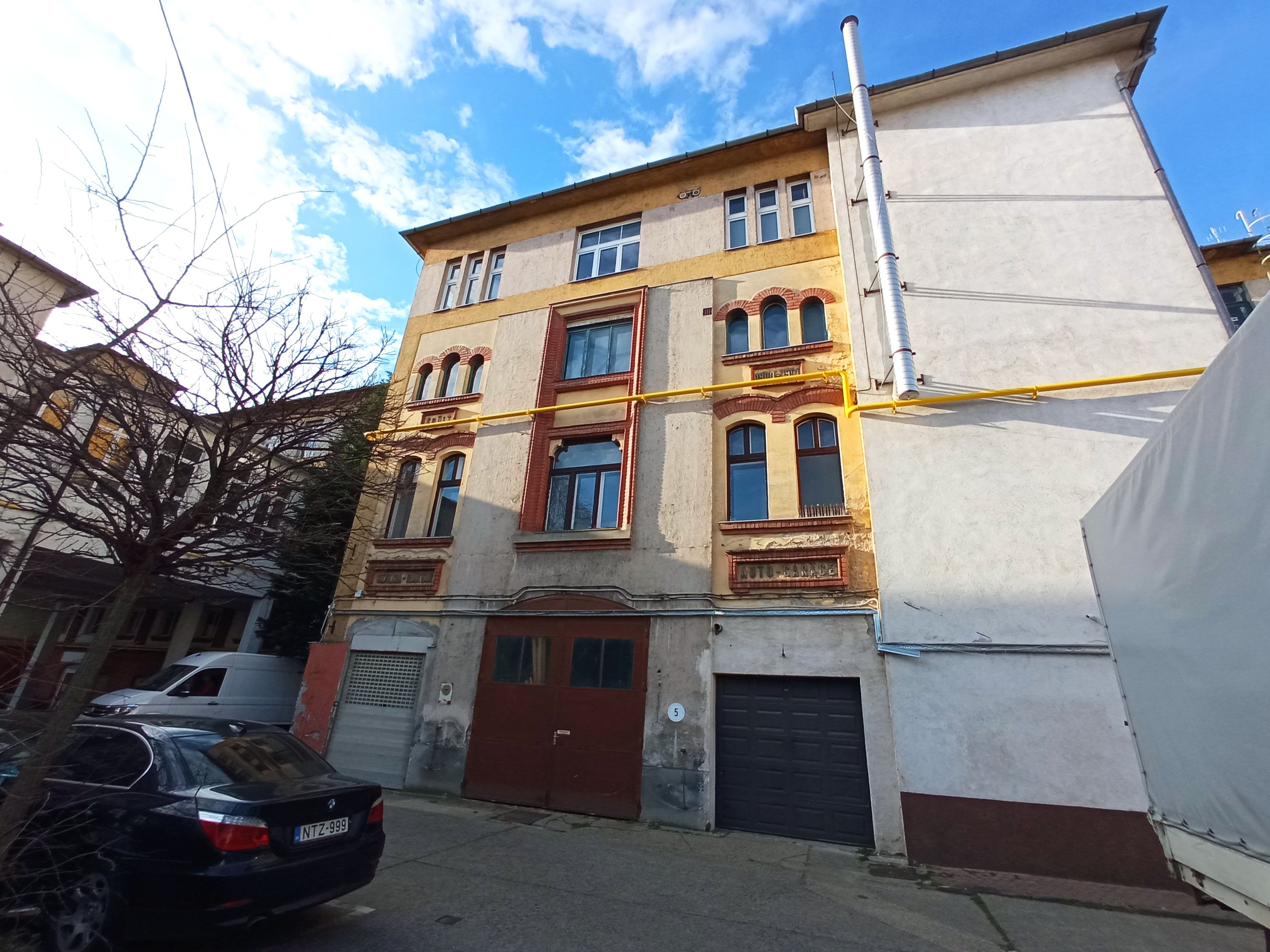
Detail of the yard nowadays, the SZALMA-RAKTÁR and AUTO GARAGE inscriptions can still be seen (Photo: Ambrus Gönczi)
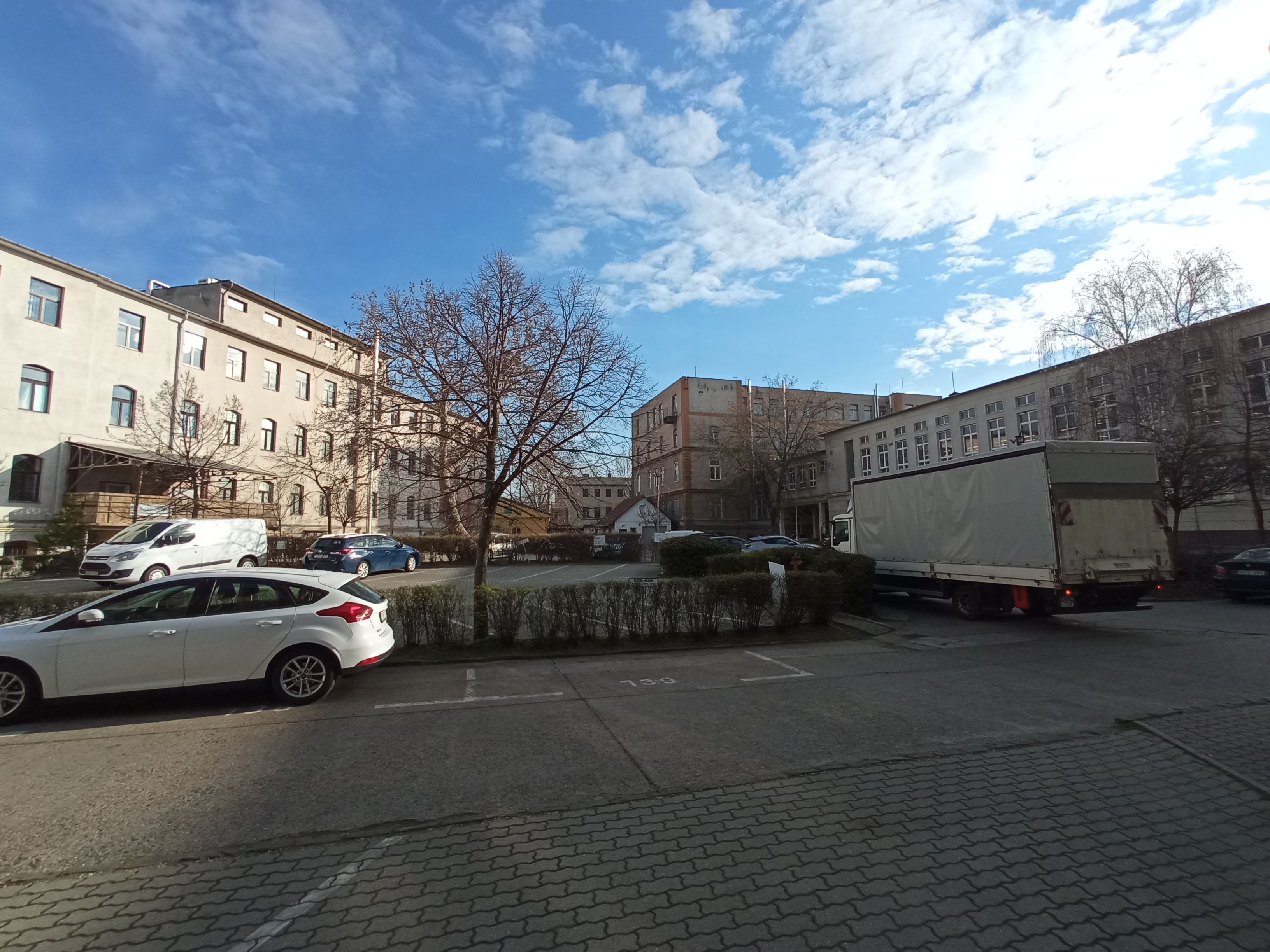
In the courtyard, the parts of the building built in different periods can be clearly distinguished (Photo: Ambrus Gönczi)
Cover photo: The Elnök Street entrance of the clothing factory around 1970 (Photo: Fortepan/No.: 111057)

